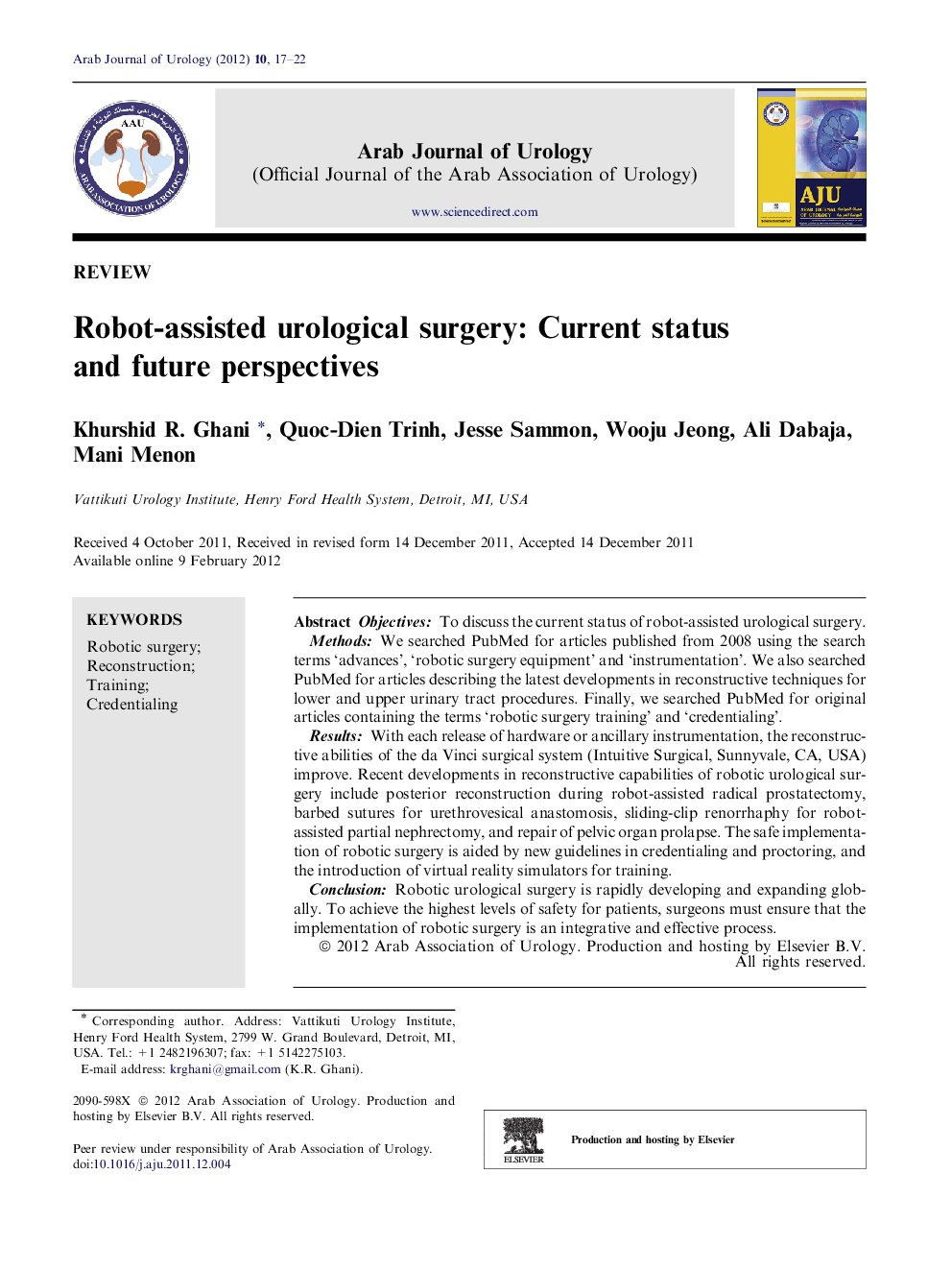| کد مقاله | کد نشریه | سال انتشار | مقاله انگلیسی | نسخه تمام متن |
|---|---|---|---|---|
| 4268220 | 1610747 | 2012 | 6 صفحه PDF | دانلود رایگان |

ObjectivesTo discuss the current status of robot-assisted urological surgery.MethodsWe searched PubMed for articles published from 2008 using the search terms ‘advances’, ‘robotic surgery equipment’ and ‘instrumentation’. We also searched PubMed for articles describing the latest developments in reconstructive techniques for lower and upper urinary tract procedures. Finally, we searched PubMed for original articles containing the terms ‘robotic surgery training’ and ‘credentialing’.ResultsWith each release of hardware or ancillary instrumentation, the reconstructive abilities of the da Vinci surgical system (Intuitive Surgical, Sunnyvale, CA, USA) improve. Recent developments in reconstructive capabilities of robotic urological surgery include posterior reconstruction during robot-assisted radical prostatectomy, barbed sutures for urethrovesical anastomosis, sliding-clip renorrhaphy for robot-assisted partial nephrectomy, and repair of pelvic organ prolapse. The safe implementation of robotic surgery is aided by new guidelines in credentialing and proctoring, and the introduction of virtual reality simulators for training.ConclusionRobotic urological surgery is rapidly developing and expanding globally. To achieve the highest levels of safety for patients, surgeons must ensure that the implementation of robotic surgery is an integrative and effective process.
Journal: Arab Journal of Urology - Volume 10, Issue 1, March 2012, Pages 17–22